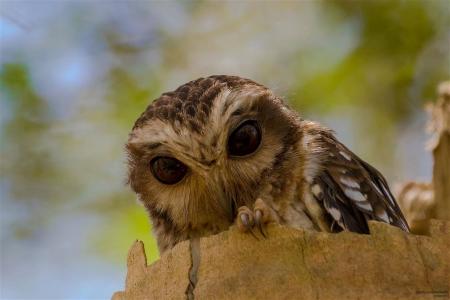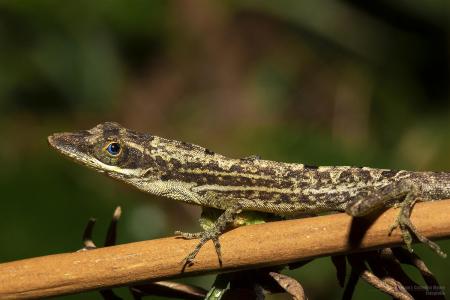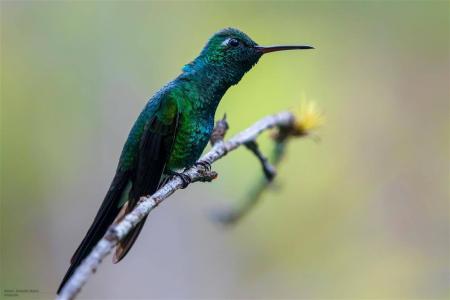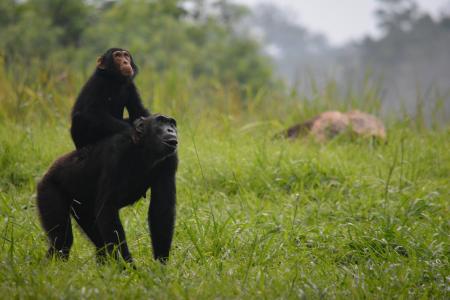Saving the Forest for the Trees
Deforestation is Threatening Critical Ecosystems Around the World
By Ashley Junger
A call came in from a farm down the road. Calls like these are becoming more frequent, but they never get easier. The vet grabbed her supplies and raced to the scene. Within the rows of maize, on the ground was a chimpanzee. Covered in coarse black fur, she laid close to the ground, huffing and in obvious distress. Her leg was stuck in a “man trap,” spring-loaded teeth held her in place. The vet freed her and examined her leg. It was shattered, irreparable. It would need to be amputated. It was becoming more common to see chimpanzees bearing the scars of snares like these, hanging from trees with one or even both legs missing.
The traps are laid by farmers, an escalating attempt to keep chimpanzees out of their fields. Many farmers stand watch, Monday to Sunday then Monday again, and shoo them or throw rocks. But more and more farmers, like this one, are becoming desperate and are turning to more radical measures to keep these trespassers out.
Life in this village is hard. There are few economic opportunities, so to eat, you have to farm. The fields dominate the landscape, stretching up to the boundary of the Budongo Forest Reserve, where the chimpanzees live. This farmer’s land boarders this reserve, making his maize too tempting to ignore for his chimpanzee neighbors. A handful of food to the raiders here or there may not do much harm, but with his farm under constant assault, he had to choose: defend his land or let his family go hungry.
This clash between chimpanzees and farmers is not just threatening the farmers’ food, but also their safety. In 2014, an adult male chimpanzee snatched Ntegeka Semata’s two-year-old son from their garden, as reported by National Geographic, dragging him into the forest and killing him. Ntegeka is not the only mother to lose a child. The farmers say that when they grew up, even just ten years ago, raids by primates weren’t frequent. But now, as farmland has consumed the surrounding forests, things are different. Local scientists look to the staggering changes in the landscape as one of the main instigators in this escalating conflict.
But what really is deforestation? How does it drive animals, like chimpanzees and humans, into conflict? And is there anything we can do to stop it, or at least slow it down?
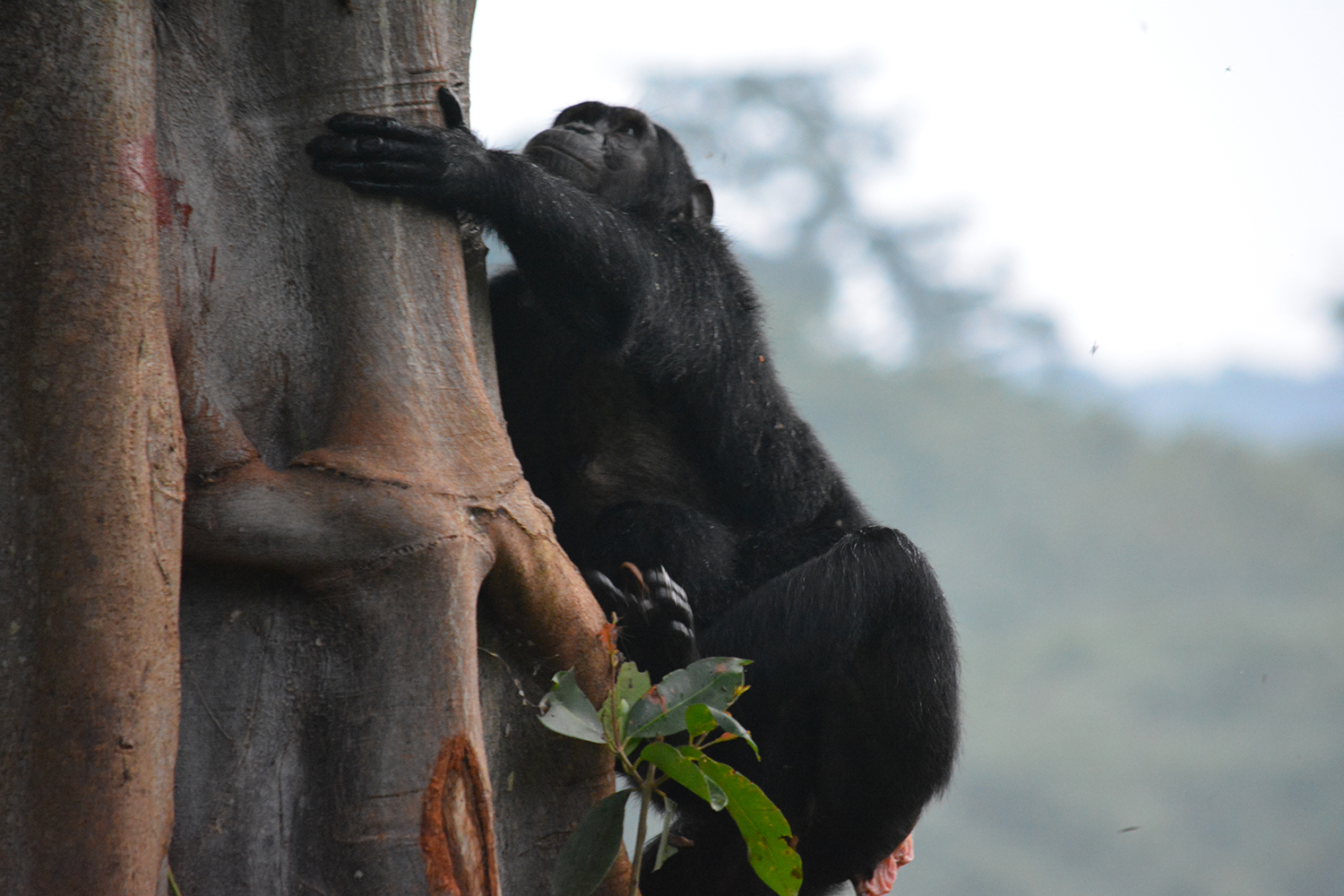

What is a forest?
From the gently sloping pristine forests of Uganda to the mountainous tropical forests of Cuba to the towering evergreen forests of Washington’s Olympic Peninsula, the definition of forests as “large areas covered chiefly with trees,” does nothing to capture their spectacular diversity.
Short, tall, dry, wet, no two forests are quite the same. But there are a few things all forests have in common, and these characteristics are at the core of why forests are so prevalent in talks about combating global climate change.
Trees store carbon dioxide, one of the primary greenhouse gasses contributing to the warming of our planet. Trees take carbon dioxide from the atmosphere during photosynthesis, then use it to build new stems, leaves, and roots. This process stores carbon dioxide for long periods of time. Studies have shown that older trees store more carbon than younger trees, making old-growth forests a crucial resource to stabilizing the global climate.
Additionally, trees fight erosion, keep the ground below their branches cool, and provide homes for an estimated eighty percent of the world’s terrestrial plant and animal species. From medicine to food supply to climate regulation, forests are an essential, irreplaceable resource.
According to the World Bank, forests currently cover about 30 percent of the world’s land area. But deforestation from disturbances, such as fire, development, or agriculture is removing large areas of forest, and it’s happening at an unprecedented rate.
Last year alone, the tropics lost 30 million acres of tree cover—8.8 million of which were old-growth forest, equaling an area the size of Belgium. Once these forests are gone, the food, habitat, carbon storage, and every other ecosystem service they provide is destroyed, and there’s no guarantee that simply planting more trees will bring those functions back.
While forests have a lot in common, there is no one solution to save them. Each forest exists in a unique context of community, politics, and environmental conditions. Some forests hover on the edge of destruction. And that’s where Earthwatch comes in.
Forests are a major, requisite front of action in the global fight against catastrophic climate change— thanks to their unparalleled capacity to absorb and store carbon.
—2018 joint statement by the UN’s environment, development, and agriculture chiefs


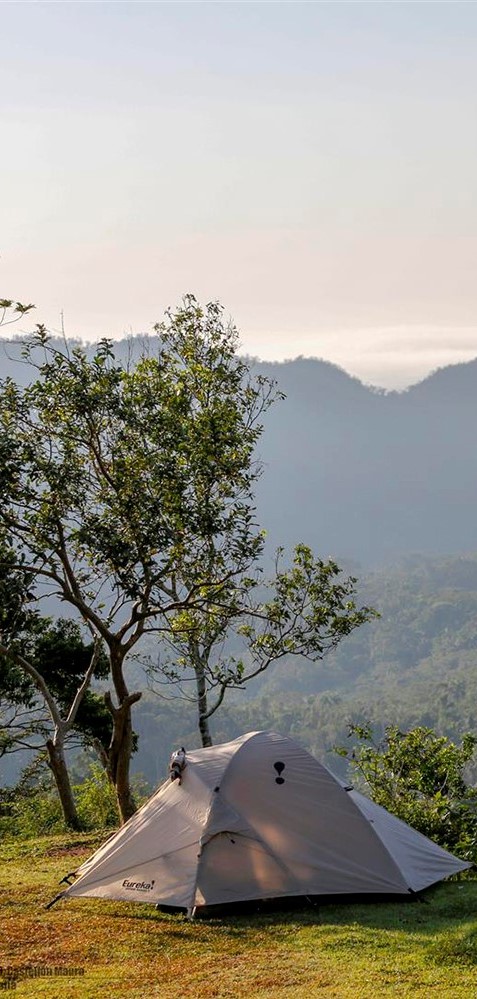
If they’re lost, they’re lost forever.

Mapping Biodiversity in Cuba
The mysterious mountain forests of Cuba have been difficult for scientists to access, but now, after decades of political complexities, scientists are able to take advantage of international cooperation to explore the rich and varied biodiversity housed on the island nation.
But the same circumstances making research easier may also be the impetus for a new wave of tourism and development, threatening Cuba’s natural areas. As the island becomes more open to the world, many residents predict new economic opportunities and the development that comes along with it.
More tourists mean more resorts, more trails through parks, and more golf courses—all of which would require cutting down trees to make room. But after decades of stymied economic growth, it’s hard for residents to pass up all of these opportunities. The economic and ecological well-being of the island are in a standoff.
While this island has undergone periods of development previously, many are worried that the forecasted economic opportunities could quickly bulldoze much of the island’s remaining natural areas. Now is a critical time in Cuba’s natural history; what scientists and policy makers do today could determine the future of the island’s wild areas.
One of the people concerned for Cuba’s future is Dr. Natalia Rossi, the Cuba Country Manager through the Mesoamerica and Western Caribbean Program at the Wildlife Conservation Society. She’s in a race against time to collect enough information to safeguard the diversity of Cuba.
Natalia works in the Lomas de Banao Ecological Reserve (LBER), an area that has quickly growing agriculture and tourism sectors. As the lead scientist of the Earthwatch Expedition Mapping Biodiversity in Cuba, Natalia is teaming up with citizen scientists from across the globe to monitor biodiversity within LBER.
By collecting baseline information on biodiversity in the region, Natalia is helping to illuminate patterns, which will allow her to make recommendations on management. Natalia trains and works with Earthwatch volunteers to observe and record bird and amphibian species and identify and documents tree species. Natalia, her research team, and Earthwatch volunteers were able to record 97 species of birds, 15 species of amphibians, and 18 species of reptiles in 2018.
“At some point, Cuba is going to open to the world,” said Natalia. “Through this research, when that big wave of development arrives, we will have more information to make informed decisions on where to develop and how to develop.”
The stakes are high. Each time Natalia walks a group of volunteers through the forest, listens for a bird call, and gets lost in the wild, she knows that it’s all threatened by future development. Many of the species within the forest are only found in Cuba.
“If they’re lost, they’re lost forever,” said Natalia.
But Natalia knows that data alone may not be enough to protect vulnerable areas. The buy-in of local people is essential. In the central cordillera region in which Natalia works, many people live right outside the protected areas and rely on the biodiversity within for their livelihoods.
Natalia has included a strong community outreach component into this project, directly engaging with the people whose day-to-day lives will be most affected by management decisions. This community outreach and education gets community members invested in the survival of biodiversity and encourages solutions that community members can follow and encourage.
Natalia is working to preempt many of the negative consequences of deforestation before they affect the island nation. But In many areas, deforestation has already taken its toll, resulting in escalating conflict.
Investigating Threats to Chimps in Uganda
Some effects from deforestation are fairly predictable—like erosion and loss of species. But forests don’t exist in a vacuum. The land and ecosystem services lost when forests are destroyed will also affect the wilderness and wildlife that still surround it, resulting in unexpected, sometimes fatal, consequences. This is the case in the Budongo Forest Reserve in Uganda.
“All the trees outside have been cleared, and everywhere there is human encroachment up to the forest edge,” said Geoffrey Muhanguzi, the field team leader and a co-scientist on the Earthwatch expedition Investigating Threats to Chimps in Uganda.
This proximity of animals and humans and the overlap of shared resources has resulted human-wildlife conflict, as humans rely on crops grown in areas chimpanzees used to be able to freely roam and forage. Geoffrey, along with Dr. Fred Babweteera, the lead Earthwatch scientist for this project, are trying to understand why fruit production has declined over the years and exactly how this affects primate foraging.
With the help of Earthwatch volunteers, Geoffrey and Fred are collecting data on where in the forest fruiting and flowering trees are, the abundance of primates and birds, and how climate variables are affecting fruiting trees. People come from all over the world to hike through the dense forest and track chimpanzees, meticulously observing their eating habits.
“You can see the volunteers developing a feeling of how challenging it can be living at the protected area and community interface, how it can be challenging to grow agricultural crops within a landscape that has wild animals entitled to their home,” said Geoffrey.
With the help of these volunteers, Geoffrey and Fred are able to collect data on a scale that wasn’t possible before. With the extra helping hands, they have a much clearer picture of what is happening within the forest. But these trees have life spans of hundreds of years, meaning many more years of data are need to have an accurate idea of what factors are influencing their fruit production.
“We have information that is starting to raise a red flag and point somewhere, but we still need more years of data collection,” said Geoffrey. “What we have now is a systematic way of building this data set, so that in the future it is used as a reference point.”
“What we have piloted and what we recommend is the use of non-palatable crops,” said Geoffrey.
To alleviate the conflict between chimpanzees and humans, Fred and Geoffrey are encouraging farmers to plant crops that don’t appeal to chimpanzees— either because they aren’t tasty or they’re inedible. While this would effectively reduce the number of chimps stealing from farmers, it would require massive buy-in on the part of the local community. They’d have to shift from subsistence farms to cash crops and rely on the market to ensure that their crop is valuable enough to support their family.
While researchers can fight to protect the remaining forests, there is no painless solution for the conflicts that have resulted from wide-scale deforestation in the area. Clashes between humans and wildlife are increasing as areas that were once home to a variety of species are abruptly repurposed for agriculture, mining, or development.
But what is the solution? Humans can’t just stop farming. There’s a huge global market for the natural resources harvested from forests, and for every country willing to strictly protect their wilderness, there’s another waiting to take advantage of the economic opportunity.
Bird Songs of the Olympic Peninsula
Standing in the woodlands of Washington’s Olympic Peninsula in the western U.S., you’re overwhelmed by a sense of timelessness. The towering evergreens, some of which are the largest and oldest trees on the planet, dominate the landscape, providing homes to animal species found only within those forests.
Today, almost one million acres of this woodland is protected as a World Heritage Site, but this area was also once home to a thriving logging industry. For over a century, portions of the Pacific Northwest were clear-cut, and the trees were sold as timber. After decades of environmental activism and lawsuits logging has decreased and many more laws govern forestry practices in the region. For decades, and still today, there has been tension between those who want to conserve the land for wildlife and those who want to harvest its natural resources.
But from the perspective of those who manage this land, the issue doesn’t need to be so binary. Some researchers, like Dr. Teodora (Teddy) Minkova, a Natural Resource Scientist for the Washington State Department of Natural resources and lead scientist on the Earthwatch expedition Bird Songs of the Olympic Peninsula, are working to find ways to maximize the land for both ecological health and economic well-being.
“There’s no black and white. It’s not just ‘forest’ or ‘no forest,’” said Teodora. “There are many shades of gray in between as to what forests may look like and what forest management can look like.”
Teddy is working within the watersheds of the Olympic Experimental State Forest (OESF) to test a variety of sustainable land management strategies to determine which one best maximizes both ecological and economic health. The idea is that if the land effectively conserves ecosystem services and provides economic opportunities, the local community is much more likely to support those efforts.
“Forestry and forest management, it’s actually a really social endeavor,” said Teddy. “You have to recognize these trade-offs, and you have to consider the environmental and social aspects in order to find solutions, very often compromise solutions, which are sustainable.”
With Earthwatch volunteers by her side, Teddy hikes through the Olympic Experimental State Forest (OESF) to collect data on how different management styles affect different habitat functions. Research teams are collecting data from four areas, each managed in different ways: (1) land managed under the current harvesting procedure, (2) land managed as an ecological reserve, (3) land managed under an innovative approach that is designed to better integrate ecological values and revenue, and (4) land that isn’t managed.
Earthwatch teams are assessing the health of these different areas by collecting bird calls using a method known as passive acoustic monitoring. Volunteers help set up sound recording units throughout the forest to collect high-resolution sound recordings over several days. Then they’ll use a software to automatically recognize bird calls on the recordings from key species. Knowing which birds, and how many, live in a forest is a good indicator of the quality, diversity, and function of that forest.
Using this data, Teddy can analyze how management strategies change forest quality over time and determine which management strategy has the best ecological outcome. These ecological indicators will be analyzed along with social and community well-being indicators, like the availability of local jobs, salaries, connectedness to the land, recreational access, and human health, to determine which management strategy best balances ecological health with economic well-being. With this information, Teddy can inform land management plans and environmental policies throughout the Pacific Northwest.
“It has to be interaction, communication, and collaborative governance to find a sustainable path forward,” said Teddy. “Learning and collaborative governance are the foundations for successful and sustainable forest management.”
Building this close relationship between evidence-based management, government involvement, and community buy-in allows Teddy to recommend management styles that best serve all stake-holders, almost in real-time. And as the effects of climate change intensify around the world and ecosystems rapidly change in response, this close relationship between stakeholders will be essential.
With climate change, we’re uncertain what is to come. Facing this uncertain future, it’s even more important for us to acknowledge that we need to constantly learn, be flexible, and be able to adapt.
— Dr. Teodora Minkova, Bird Songs of the Olympic Peninsula
Unfortunately, we are past the point where we can leave forests alone. Forest management is absolutely essential, not only as climate change alters these landscapes, but also as the human population grows and expands into once wild areas. Even areas that are considered pristine are often heavily affected by the consequences of human activity, like air pollution, mercury pollution, or industrial runoff.
“We’ve already left our footprint everywhere, and we need to consider our continuous influence,” said Teddy.
Moving forward the way we view nature and the ways we manage our lands will have to change. For it to truly be sustainable, forest management will have to be more sensitive to the changing needs of ecosystems and the well-being of the surrounding community. While the solutions Teddy is developing will be very specific to the forest she works in, she hopes her work can be a model for other forest managers worldwide.
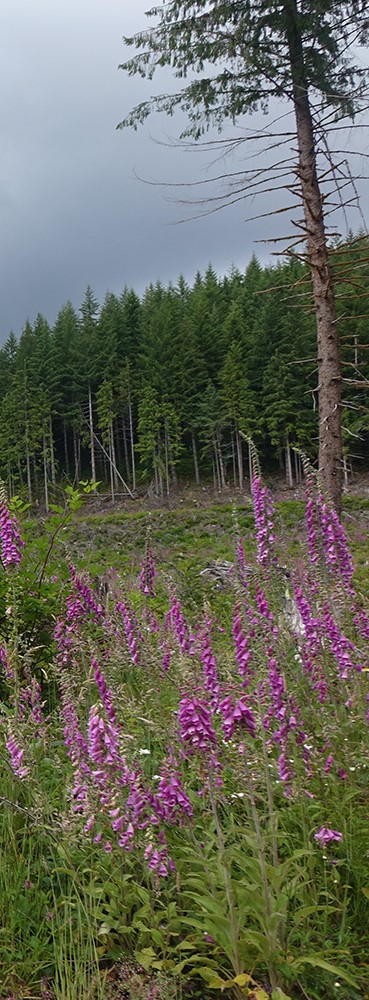

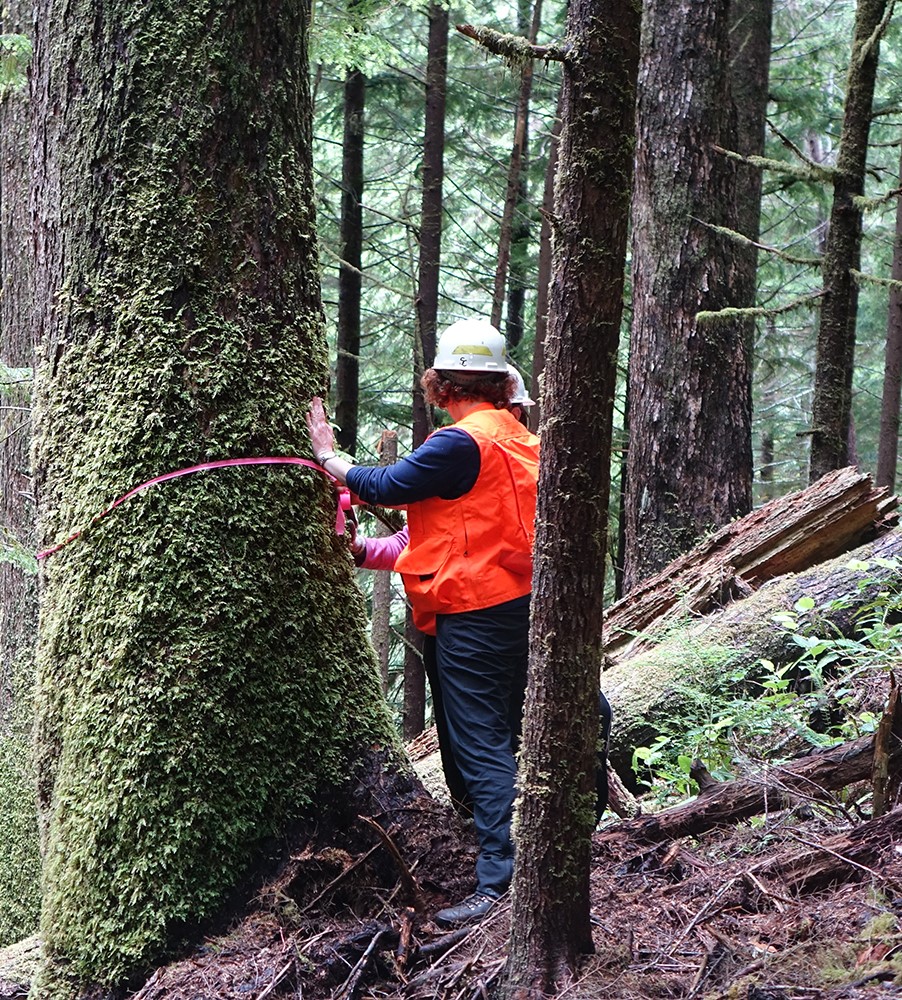
Fighting for a Future for Our Forests
The first law of ecology is that everything is connected. When a tree is cut down, the tree itself isn’t simply removed. The food it provided is gone. The shelter it gave is gone. The carbon it stored, the roots preventing erosion, the shade it created are all gone. From deep into the soil to beyond its highest leaves, the absence of that tree will leave a scar. And when whole forests are destroyed, it leaves a wound that infects the land around it, creating conflict and loss.
There’s no simple way to prevent the damage of deforestation. Each forest has a unique set of animals, people, and circumstances that need to be addressed. So if we want to save these forests, we’ll have to do the hard work. We’ll need long-term data and boots on the ground. And that’s what Earthwatch is doing. They’re working with scientists in the most vulnerable ecosystems around the world to ensure that the necessary data is available to make policy decisions that will both conserve forests and support local people.
You can donate to support this critical research. Each donation to Earthwatch will help fund research equipment and ensure this critical data is collected. Make a meaningful contribution to protecting threatened forests. Join us to protect our planet and combat deforestation around the world.
Thanks for reading! Please share any questions or comments related to this article by emailing us at communications@earthwatch.org.
